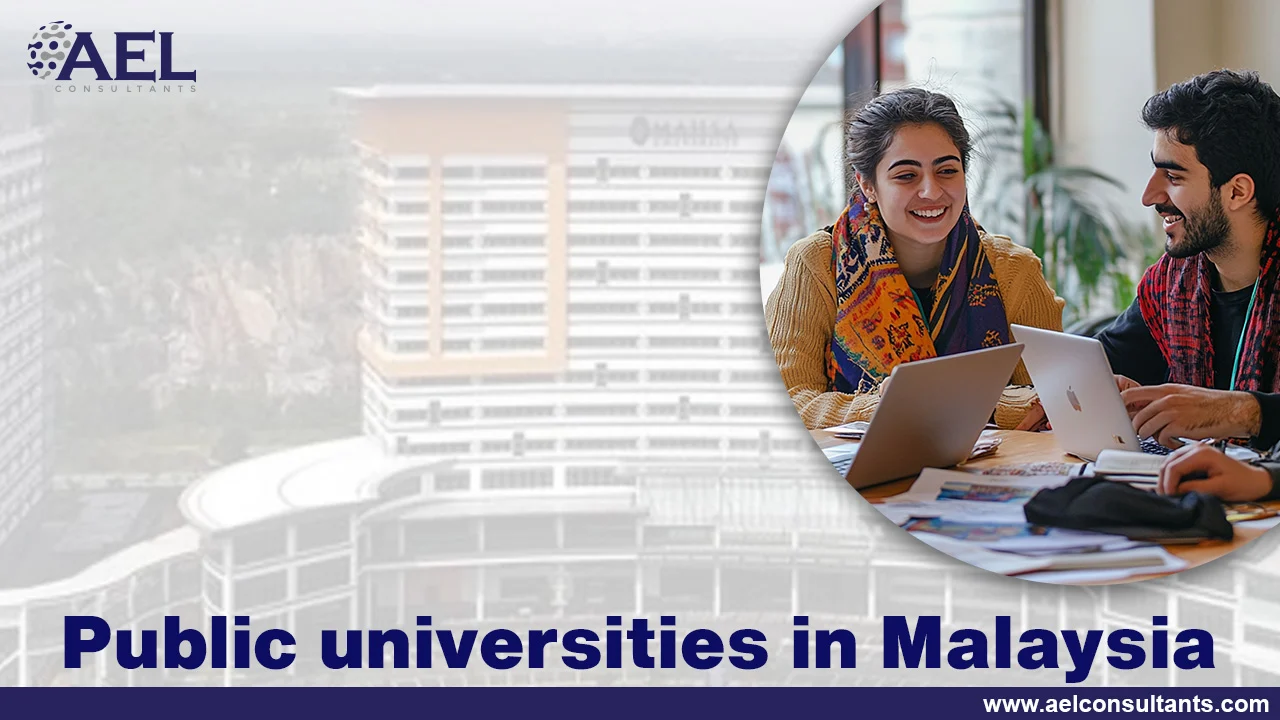Students looking for public universities in Malaysia sometimes want to know which universities offer not only inexpensive education but also internationally recognized quality. Malaysia has turned into one of the most popular locations for higher education in Asia, drawing thousands of foreign students annually according to recent UNESCO statistics. The explanation is straightforward: its public and private institutions are dedicated to providing top-notch, industry-driven courses at affordable prices.
We will look at the best government colleges in Malaysia in this guide as well as other private institutions that have garnered a reputation for quality.
Why Should You Choose Malaysia’s Public Universities /Institutions?
Malaysia’s government funds and supports its public universities, which often:
- Offer inexpensive tuition charges relative to those of private universities.
- Provide a broad range of activities across science, technology, medicine, and social sciences.
- Strong research facilities and global rankings.
- Reach out to several student populations from Asia, the Middle East, and Africa.
Because of the equilibrium between quality and cost-effectiveness, these universities are especially enticing for foreign students.
Preference of Malaysian Students from Top Government Universities
Following are some of the top-ranked and most respected public institutions in Malaysia:
1. Universitas Malaya (UM)
Being the oldest university in Malaysia, UM is always among the top 100 institutions worldwide. With first-rate research possibilities, it is especially potent in engineering, medicine, and the social sciences.
2. National University of Malaysia (UKM)
Also referred to as the National University of Malaysia, UKM is well-known for its studies in social sciences as well as technology, medical health sciences.
3. Universiti Putra Malaysia (UPM)
First an agricultural university, UPM has grown to be a full research institution. It is outstanding in biotechnology, environmental sciences, and agriculture.
4. Universiti Sains Malaysia (USM)
The University of Malaysia, USM specializes in medical sciences, natural sciences, and engineering. Highly specialized, it boasts health and engineering campuses.
5. UTM stands for Universiti Teknologi Malaysia.
UTM is well known for its engineering and technology courses, drawing students who want to work in innovation-driven industries, information technology, computer science, and other related sectors.
Other Worthy Educational Institutions in Malaysia
Though Malaysian education is built on public universities, many private ones are also crucial in molding the academic scene of the country. Strong industry contacts, international exposure, and creative courses are provided by institutions. Among the well-known names are:
- Renowned for design, multimedia, and creative arts programs with a sizable foreign student population, Limkokwing University of Creative Technology is also well known.
- Ranked among the top private universities in Southeast Asia, Taylor’s is renowned for its hospitality, business, and medicine.
- University & Colleges INTI International Provides a great range of programs and close ties with institutions worldwide.
- SEGi University is Renowned for business, education, and health sciences, this is among the largest private institutions.
- Specializing in health and medical sciences, MAHSA University draws a lot of prospective physicians and other healthcare experts.
- Cyberjaya University (UoC) emphasizes medicine, pharmacy, and related health sciences.
- Offers a range of courses with a focus on affordable education at Asia Metropolitan University.
- Often topping private ratings, Asia Pacific University (APU) is much known for its programs in IT, engineering, and technology.
- Giving students more choices depending on their career objectives, lifestyle, and financial factors, these institutions support the public system.
How to Choose Between Private and Public Universities
Consider the following when deciding between a public university in Malaysia and a private one:
Budget: Normally less expensive at public colleges.
Specialization of a course: Some private institutions excel in hospitality, IT, or creative arts.
Institutes like UM and Taylor’s both have world rankings.
Location and Features: Private institutions may provide contemporary, city-centered facilities; public ones frequently have bigger campuses.
This flexibility and balance lets Malaysia serve global students in various stages of their academic paths. If you’re searching for affordability or valuing specialized, industry-oriented courses, Malaysia has it all for you!!
FAQs
- Which Malaysia’s leading governmental universities are they?
Top-ranked public institutions are Universiti Malaya (UM), Universiti Kebangsaan Malaysia (UKM), Universiti Putra Malaysia (UPM), Universiti Sains Malaysia (USM), and Universiti Teknologi Malaysia (UTM).
- Are Malaysia’s public universities cheap for foreign students?
Compared to Western universities, Malaysia’s public universities provide high-quality education at vastly reduced tuition costs.
- Are international students eligible to apply to private as well as public universities?
Absolutely. Though admission standards may vary, both kinds of institutions welcome foreign students.
- Which private colleges in Malaysia are regarded as high quality as well?
For excellent education in particular subjects, Taylor’s University, Limkokwing University, APU, INTI, SEGi, and MAHSA are well-known.
Final Words: Malaysian Public Universities at the Center of Excellence Education
Malaysia has strongly established itself as an Asian educational hub, with public institutions supporting inexpensive, internationally renowned learning. Institutions like Taylor’s, APU, and Limkokwing enrich the higher education system at the same time by providing special chances in particular disciplines.
The decision for students thinking about studying in Malaysia depends on individual goals, job aspirations, and budgetary planning. The country ensures education is accessible, inventive, and oriented for the future whether public or private.







